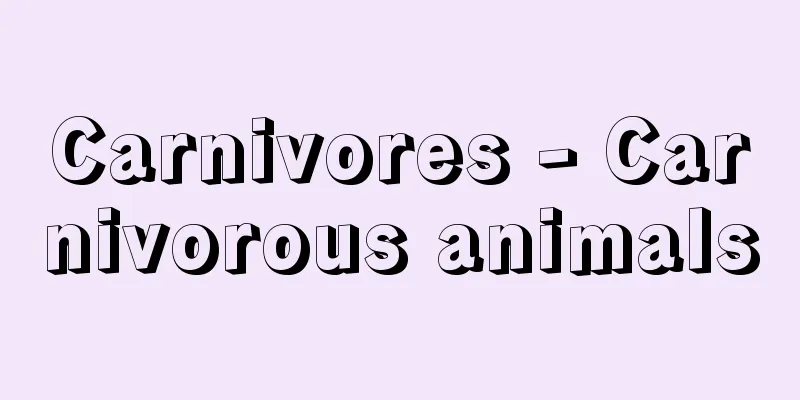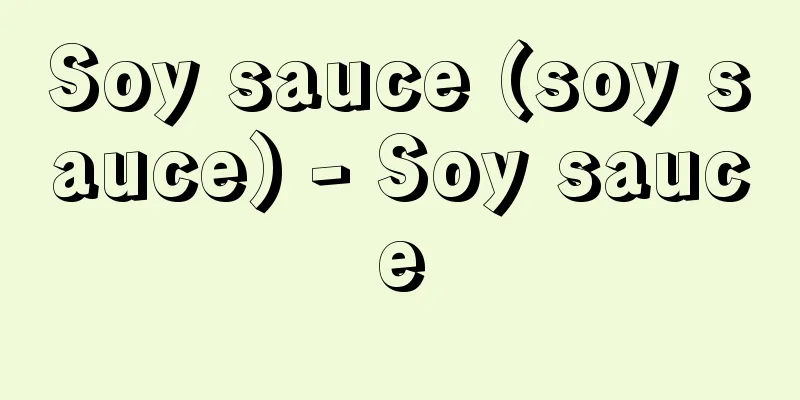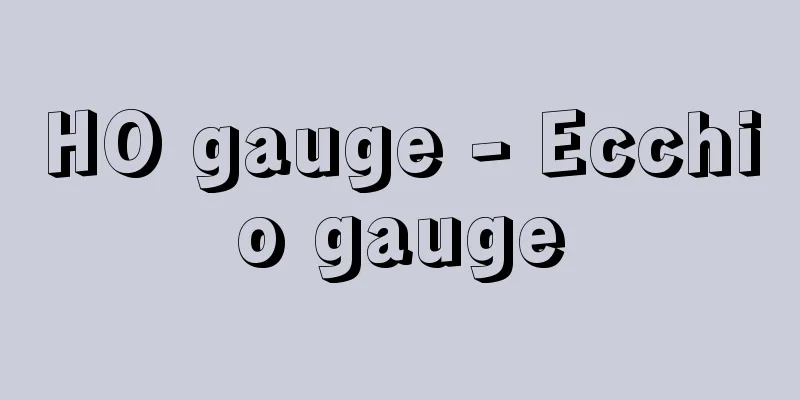Carnivores - Carnivorous animals

|
This refers to animals that consume animal food. This type of diet is called carnivorous. Animals that feed on this diet have developed various predatory organs depending on the athletic ability, habitat, and body size of the prey animals. When prey animals are active, it is important to catch them securely and not let them escape, so their teeth, beaks, and claws are sharp. On the other hand, there are animals that are suited to collecting large amounts of small food, such as baleen whales that filter and eat krill from seawater. There are several types of predatory behavior. There are methods to search for and chase prey, methods to lie in wait and catch animals that come close, and methods to efficiently collect large amounts of animals that are close and easy to catch. In the case of tiger beetles, adults search for prey insects on the ground, while larvae lie in wait in holes they dig in the ground. Animal foods are more efficient in terms of digestion than plant foods. However, animals often have well-developed skeletons and fur, so owls and kingfishers, which swallow their prey whole, spit out the indigestible material from their mouths in chunks, which they call pellets. In an ecosystem, carnivores are at the rear of the flow of materials. For this reason, the strong bioaccumulation of harmful substances has become a problem in recent years under environmental pollution. Carnivores can drastically reduce the populations of their prey, but they do not necessarily regulate those populations. [Kenji Takamura] [Reference] |Source: Shogakukan Encyclopedia Nipponica About Encyclopedia Nipponica Information | Legend |
|
動物性の食物を摂取する動物をさす。このような食性を肉食性という。この食性の動物は、餌(えさ)となる動物の運動能力や、すみ場所、体の大きさに応じてさまざまな捕食器官を発達させている。餌動物が活発に運動するものの場合には、それを確実に捕まえて逃がさないことが重要で、歯や嘴(くちばし)、そして足のつめが鋭くなっている。一方、オキアミを海水中から漉(こ)し取って食べるヒゲクジラ類のように、小さな食物を大量に集めることに適している動物もいる。捕食行動にはいくつかの型がある。餌を探し追いかけて捕まえる方法や、待ち伏せして近づいた動物を捕まえる方法、それに、身近にいて捕まえやすい動物を効率よく大量に集める方法などがある。昆虫のハンミョウは、成虫は地面の上で餌虫を探し回るが、幼虫は地面に掘った穴の中で待ち伏せる。 動物性の食物は、植物性のものより消化の面では効率がよい。しかし、動物は骨格や体毛が発達していることが多いので、まるごと餌を飲み込むフクロウやカワセミは、そのような消化できないものをまとめて口から吐き出すが、これをペリットとよぶ。生態系のなかで肉食動物は物質の流れの後部にいる。そのために近年の環境汚染下では有害物質の生物濃縮が強く現れることが問題となる。肉食動物は餌動物の個体数を極度に減らすことがあるが、その個体数をかならずしも調節はしない。 [高村健二] [参照項目] |出典 小学館 日本大百科全書(ニッポニカ)日本大百科全書(ニッポニカ)について 情報 | 凡例 |
Recommend
Inkeri tribe - Inkeri tribe
The Uralic language family is a collective term f...
Hiromasa Ezoe
Born: June 12, 1936, Ehime [Died] February 8, 2013...
Love of Matačić - Love of Matačić
A conductor from the former Yugoslavia. Born in C...
al-Khwarizmi, Abū 'Abd Allāh Muḥammad
… Ashura Eid-ul-Adha [Kasuke Iimori]. … *Part of ...
Edominato - Edominato
...Rivers such as the Tama River, Sumida River, E...
Fair Deal
The general term for the domestic policies present...
Transuranium elements - Chourangenso
An artificial radioactive element with an atomic ...
Red silk - Momi
A thin silk fabric dyed with crimson, it was used...
Vowel change - Vocalic change
Historical changes in vowels. There are two types ...
Cagliari (English spelling)
The largest city on the island of Sardinia, locate...
Aluminium Limited [company] - Aluminium Limited
…Alcan's history began in 1928 when it separa...
Orléans - Orléans (English spelling)
The capital of the Loarre department in central F...
Yoshiyasu Ashikaga
A military commander in the late Heian period. He...
Ready to wear
…In addition to these, there are eight groups of ...
Red hat - Akabou
A business or person who transports personal bagg...









